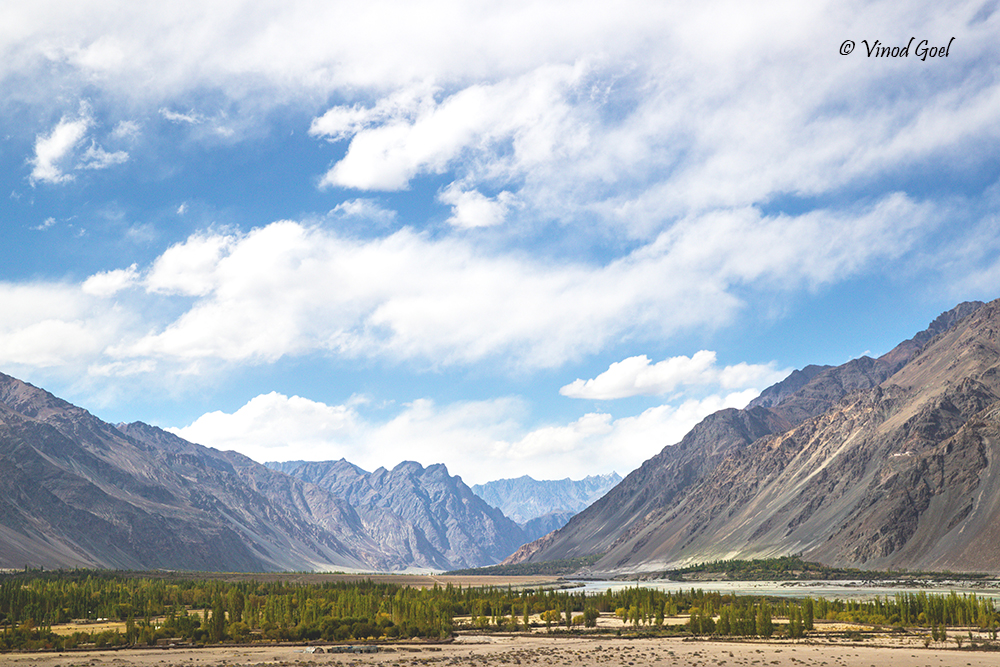Most of my friends were surprised to hear that I was visiting Leh, the capital of Ladakh for the first time in my life despite being an avid traveler. After spending a few days in Ladakh last April, I realized that next time I must spend more time in Ladakh to explore the secrets of this place.
Ladakh is known for its high altitude and the number of passes connecting the difficult terrains. The harsh weather conditions throughout the year make Ladakh a favourite tourist destination, but it requires grit and physical endurance to travel there. Though the capital city Leh has an active airport at an altitude of almost 10,000 ft, it has air connectivity from Delhi all over the year barring few aberrations, but it is motorable only half the year as the extreme weather conditions cut off the entire area from the rest of the country during the winters from October/November to April every year.
The motorable road from Manali to Leh crosses four passes - Rohtang, Baralacha, Lungalacha and Tangla. This route is open from May to November. Similarly, the road from Srinagar has passes through Sonmarg, Zozila, Drass and Kargil. This is the traditional route to Ladakh since time immemorial. No journey to Ladakh is complete unless both the routes are covered. These two routes are mesmerizing and extend lifetime experience.
People do ask “what is so great about Ladakh? It involves lot of money. It is crowded in Summer. Requires lots of endurance & grit. Far off and lots of alternatives are available."
I am of the view that it has be planned properly – when air tickets are cheap. Number of Tourists are less and attention of the host is maximum. It ensures the feel of the place that is out of the world. One may choose the winters or just before the beginning of the season i.e. end of March or beginning of April.
The first thing one must remember that, when you reach Leh by Road you are acclimatized automatically, but when you reach by air it is necessary to take a complete day’s rest to acclimatized before you start your trip. That is simply a necessary trick to remain safe & sound in this difficult high altitude terrain.
During our visit to Pangong lake, located almost 14,000 ft from the sea, in the first week of April, we could see thick layer of ice on the surface as well as waves in the blue water of the lake. It is a fact that you could drive a car on the frozen lake during winters.
Ladakh is a dream destination for many and mecca for adventure enthusiasts. It is a paradise for the photographers. There is hardly any nature or wildlife photographer, who has not been to the one of the coldest desert of the world. They come to shoot Snow Leopard and Wild Ass as well as some unique species of birds, which are endemic to this region. Even the landscape gives a feeling that is out of the world.
It is one of the least populated places on the Earth. You would see vast tracts of empty mountains and landscape for miles together… stunning snow-covered mountains, sandy mountains, natural fresh waterbodies, narrow and high passes that take your breath away, and unthinkable views that keeps on changing very fast.
At Leh one must visit the following places - Shanti Stupa (for Sun rise and Sun set, city view); Sputik Monastery; Leh Palace (replica of Lhasa Palace in Tibet); Thikse Monastery (One of the important Buddhist Monastry); Indus River (backbone of Ladakh as most of the major towns such as Shey, Leh, Basgo and Tingmosgang are located on the banks of Indus River); Breeding center of rare Double Hump Bactrian Camel; Hall of Fame Museum (developed and maintained by armed forces).
Beyond the city of Leh, one can visit the two famous lakes - Pangong Tso and Tso Moriri. These are in different directions from Leh. Both of them are worth visiting. Tso Moriri lake is about 240 km from Leh and the other one is about 140 km from Leh. You have to cross the Changla pass, the third highest motorable pass in the world at a height of 17688 feet to reach Pangong Lake. One may observe the Wild Ass known as Kiang on the way to Pangong, if you are lucky. During our visit in April, we saw the frozen river on our way to Pangong lake.
The Hemis Monastery, the largest and richest Buddhist Monastery in Ladakh is hardly 50 km from Leh. At Nubra valley one can explore Hunder and Diskit Monastry and white sand dunes. One could enjoy the ride on the Double Hump Camels, only found in this part of India. Only 161 are left in our country and are on the verge of extinction. That is the reason for a breeding center for Double Hump Camel at Leh. You could also see the Aryans, how they have settled here and attract people from all over the world.
On the way to Nubra Valley at about 40 km from Leh, you would pass through the Khardung La, the highest motorable pass in the world. It's journey worth remembering lifetime.
No doubt the terrain is treacherous, but the views are unimaginable and breathtaking. Be ready to enjoy the scenic beauty of the valley and capture its beauty on the memory cells in your mind and through the camera to show the world.
Last but not the least, don’t forget the inhabitants of Ladakh region and their culture, which have been preserved for time immemorial. The same is visible to this day in their smile, silence, humility, social network, and simplicity.
